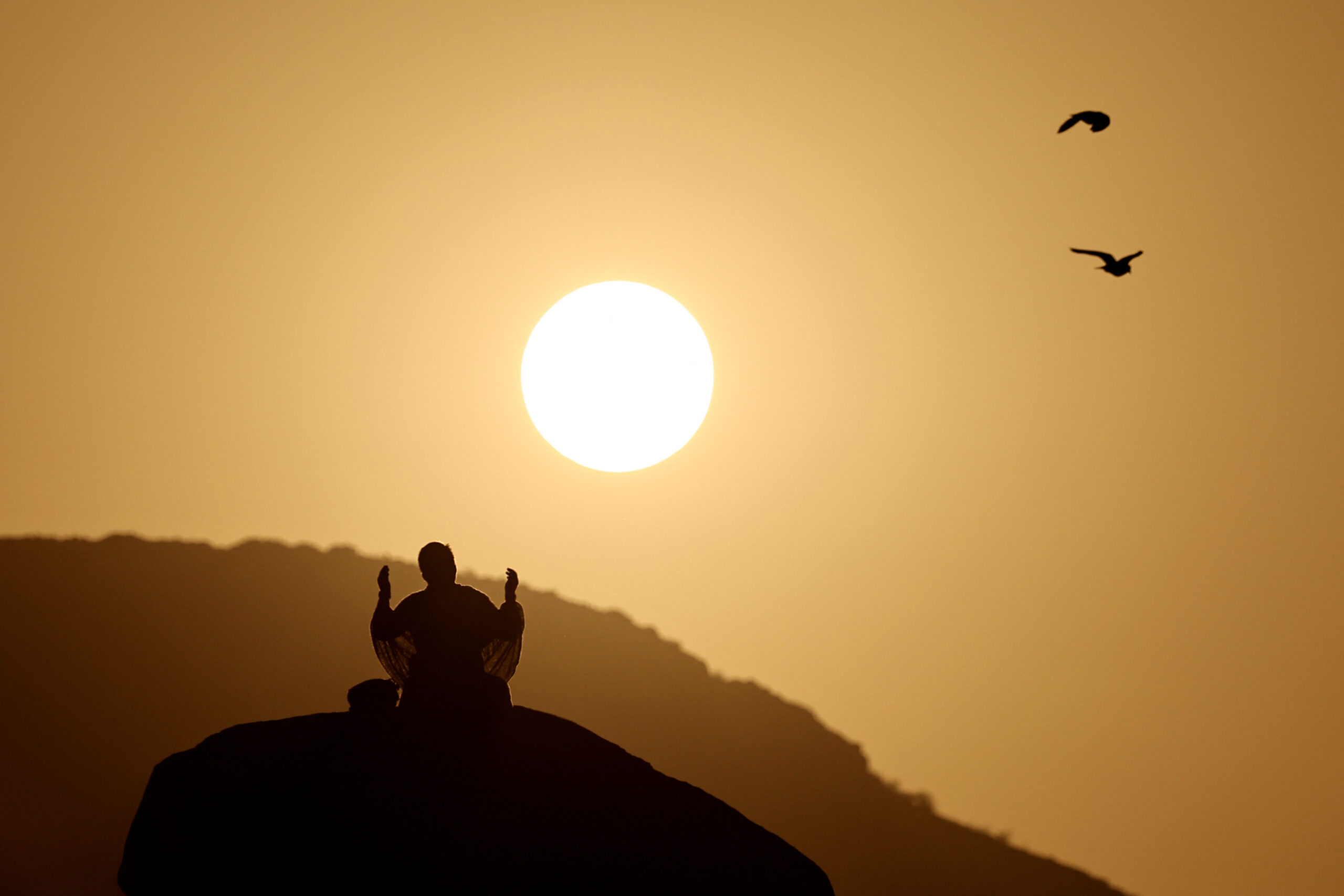
A Muslim pilgrim prays at dawn on Saudi Arabia’s Mount Arafat, also known as Jabal al-Rahma or Mount of Mercy, during the climax of the Hajj pilgrimage on June 15, 2024. More than 1.5 million Muslims will pray on Mount Arafat in soaring temperatures on June 15, in the high-point and most grueling day of the annual Hajj pilgrimage, one of the five pillars of Islam that must be performed at least once by all Muslims who have the means to do so. Agence France-Presse
MINA, Saudi Arabia — Pilgrims perform the last major ritual of the hajj, the “stoning of the devil”, in western Saudi Arabia on Sunday, as Muslims the world over celebrate the Eid al-Adha holiday.
Beginning at dawn, the 1.8 million Muslims undertaking the pilgrimage this year will throw seven stones at each of three concrete walls symbolising the devil in the Mina valley, located outside Mecca, the holiest city in Islam.
The ritual commemorates Abraham’s stoning of the devil at the three spots where it is said Satan tried to dissuade him from obeying God’s order to sacrifice his son.
READ: Hajj, Islamic pilgrimage, and its significance to Muslims
The stoning ritual has been witness to multiple stampedes over the years, most recently in 2015 when up to 2,300 worshippers were killed in the worst hajj disaster.
The site has been revamped since then to streamline the movement of the large crowds.
On Saturday night, pilgrims collected stones and slept under the stars in the plain of Muzdalifah, located halfway between Mina and Arafat, where they had spent the day praying outside in heat that reached 46 degrees Celsius (114.8 degrees Fahrenheit).
“It was very, very hot,” said Rohy Daiseca, a 60-year-old Gambian living in the United States. “Alhamdulilah (thank God), I put a lot of water on my head and it was OK.”
READ: Saudi clears Mecca of over 300,000 unregistered pilgrims ahead of hajj
Worshippers have tried to take the grueling conditions in stride, seizing what for many is a once-in-a-lifetime chance to pray at Islam’s holiest shrines.
“I am so happy that I can’t describe my feelings,” said Amal Mahrouss, a 55-year-old woman from Egypt.
“This place shows us that we are all equal, that there are no differences between Muslims around the world.”
One of the five pillars of Islam, the hajj must be performed at least once by all Muslims with the means.
This year’s figure of 1.8 million pilgrims is similar to last year’s, and Saudi authorities said on Saturday that 1.6 million of them came from abroad.
Feast of the sacrifice
The stoning ritual coincides with the feast of the sacrifice, or Eid al-Adha, which honours Abraham’s willingness to sacrifice his son before God offered a sheep instead.
Worshippers typically slaughter a sheep and offer part of the meat to the needy.
This year’s hajj and Eid al-Adha holiday have been clouded by the war between Israel and Hamas in the Gaza Strip.
READ: Muslims start the Hajj against the backdrop of Israel-Hamas war
“We are very sad for the Palestinians, and we have prayed a lot for them,” said Intissar, a 25-year-old Syrian living in Saudi Arabia, who declined to give her surname.
King Salman invited 2,000 Palestinians to the hajj at his own expense, half of whom are family members of victims in Gaza who have sought refuge elsewhere.
But Saudi authorities have warned no political slogans would be tolerated during the pilgrimage.
That has not stopped many worshippers from voicing solidarity with Palestinians.
“Pray for our brothers in Palestine, in Gaza… may God give victory to the Muslims,” one pilgrim shouted on Mount Arafat on Saturday.
In a message to hajj pilgrims on Saturday, Iranian supreme leader Ayatollah Ali Khamenei said “the ironclad resistance of Palestine and the patient, oppressed people of Gaza… must be fully supported in every way”.

